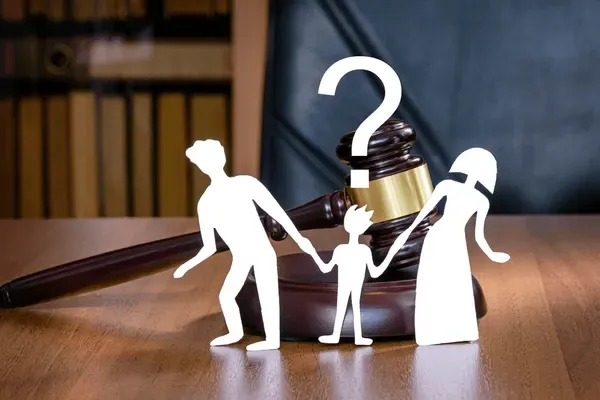Splitting a North Carolina State Employee’s Retirement Account
Understanding How Your Retirement Account can be Affected by Divorce

Dividing the retirement account of a North Carolina state employee between spouses who are divorcing can be a bit complicated. Depending on the specific nature of the account in question, there are procedures and rules that must be followed. Military retirement accounts, pensions, or 401(k), for example, are quite different to split in contrast to 403(b), Roth IRA, or traditional accounts. Needless to say, the help of a
divorce attorney is highly recommended when going through such a procedure. In this article, we will take a look at the specifics we must consider when dividing a North Carolina state employee retirement account. Paying special attention to the specific rules for each account type will guarantee a smooth process without any needless stress and problems.
Domestic Relations Order (DRO)
No matter the type of state retirement account that needs to be split, a Domestic Relations Order, or DRO for short, is needed. This document differs from the Qualified Domestic Relations Order (QDRO) which is needed for qualified employer plans that fall under the Employee Retirement Income Security Act (ERISA). Federal and state retirement plans are not covered by ERISA, so a QDRO is not relevant when it comes to dividing a state employee’s retirement plan in case of divorce. The above point is important because ERISA and non-ERISA covered plans are quite different when it comes to changing the beneficiary. In order to change the beneficiary to your ERISA-covered retirement account, your spouse will have to waive their right to the benefits for the change to get approved. The same does not apply for state employee retirement accounts, since they are not covered by ERISA. You can freely switch the beneficiary of such an account — as long as there is no DRO in play.
When Is a DRO Required?
A DRO is required for each and every public retirement plan awarded for working at a state agency. For example, two of the standard plans that need a DRO are the Local Governmental Employees Retirement System (LGERS) and the Teachers and State Employee’s Retirement System (TSERS). Both of those plans qualify as having a defined benefit, meaning that you will be required to participate in them. If your plan is of the “defined contribution” variety, in which participation is optional, you might also be required to have a DRO in order to divide it in case of divorce. There is one major difference between defined benefit and defined contribution plans when it comes to dividing due to divorce. With defined contribution, you can make the split at any time. As for defined benefit, payments cannot be made until the owner of the plan goes into retirement. To translate it into layman's terms, if you are on a defined benefit plan, your ex-spouse will not be able to receive any payments from it until you retire.
One other thing you should keep in mind on the topic is the way in which the money is eventually paid. With defined contribution, the money comes either in recurring payments or as a single payment. With defined benefit, you will receive either a fixed amount or percentage each month. It is important to point out that the sum the non-state employed spouse receives from a state plan is not allowed to be larger than what the state employed spouse gets.
What Does a DRO Include?
How Is a DRO Created?
A DRO is an official document, so it needs to include all standard information required for such filings. Here is a checklist of what needs to appear at the beginning of each DRO:
- The plaintiff’s name
- Name of defendant
- File number
- Name of the court
- State and county
- The judge’s name
- Date
As with any legal document, the DRO also needs to include all relevant findings of fact. For a divorce filing, those include date of separation, date of marriage, and information on the spouse’s retirement plan. There should also be an acknowledgment that Equitable Distribution is settled by both spouses, either by the court system or by mutual agreement or. Finally, the DRO must include the amount of funds that will be divided and the way in which the payments will be made.
After all findings of fact are laid out, the real DRO begins. It should include the amount of money in question and the agreed-upon payment method. The DRO should include a variety of relevant information and outcomes for specific cases. For example, it should outline what happens if the state-employee spouse passes away before the non-state-employed spouse has received any payments.
We advise you to look for some examples of DRO’s online so you can get a better sense of what one looks like. Of course, all cases are different, and each DRO is unique in its own way. It is highly recommended that you seek the help of a divorce attorney when filing for a divorce in North Carolina. They will be able to help you not only with the preparation of the relevant court filings but with the overall process itself.
There is no better way to craft a DRO than using the services of an experienced divorce attorney. Alternatively, there are examples online that you can use to create it yourself. However, even then, it is advised to send it to a divorce attorney for review. When it comes to divorce proceedings, you need to have all your bases covered. DROs can be tricky, so we recommend leaving the job to a professional.
Where Should a DRO Be Filed? Once the DRO is ready, it needs to be signed by a judge. Your divorce attorney will prepare the document and pass it on to the courts for review. Once it is signed by a judge, the DRO should be filed in the RSD. You need to keep in mind that the RSD tends to be quite picky about the specific language used in any given DRO. Your order might end up rejected and sent back to you for edits, so it can company with the RSD’s requirements. If a judge has already signed the DRO, it can still be rejected, forcing you to repeat the process all over again.
To avoid this, it is advisable to submit a draft version of the document to the RSD before getting a judge to sign it. Once you make the edits needed to meet RSD requirements, you can send it to court and then finally file it formally with the RSD. Going this way will save you a lot of time and ensure your DRO is filed in smoothly.











